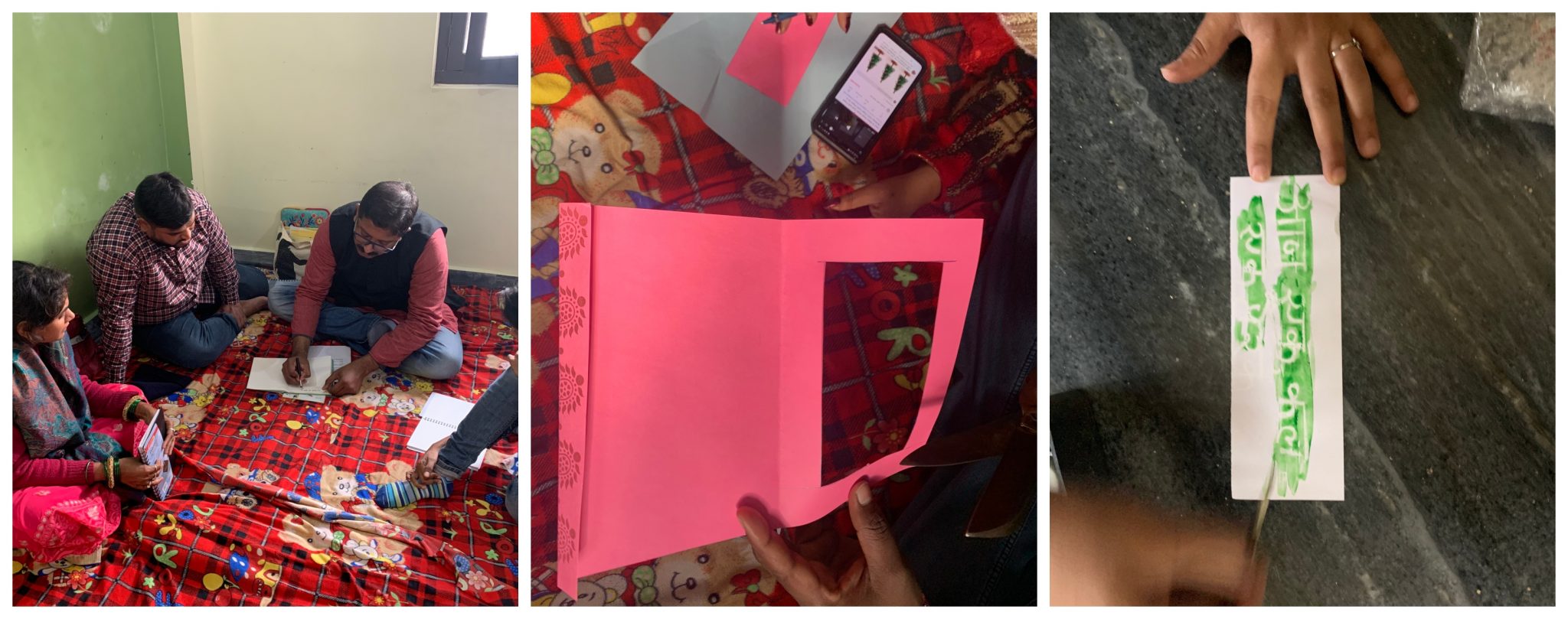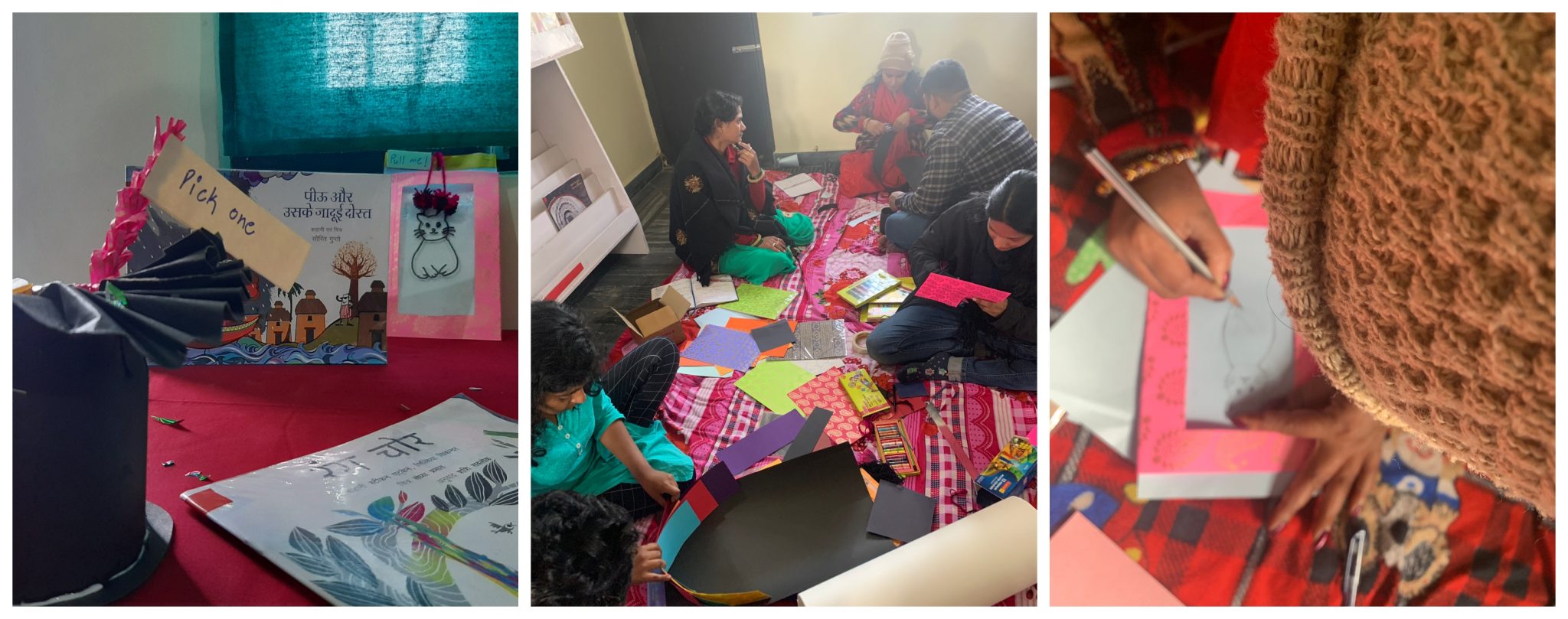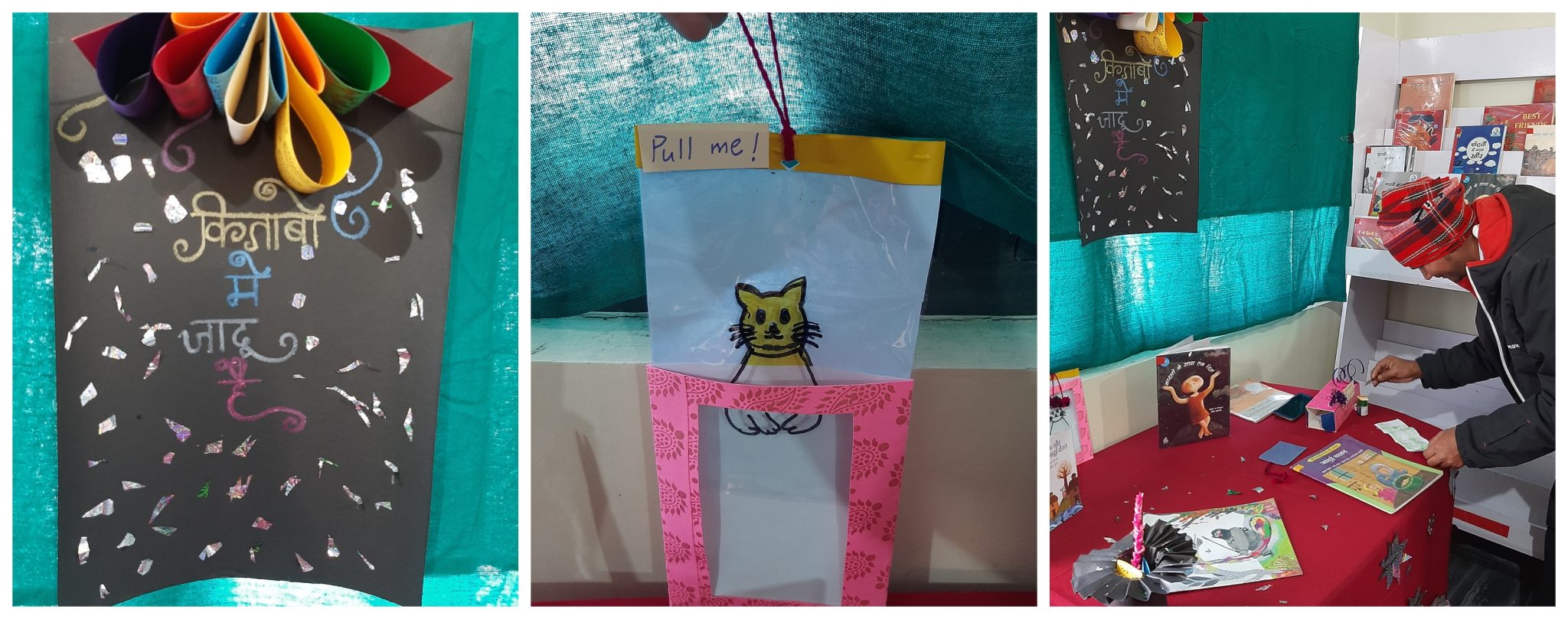As a part of our mentoring support to a sister organisation, Prayog in Bihar, Nayan, Anandita and I found ourselves in Gopalganj Dt. of Bihar on a pleasant week in December 2020. The world of the pandemic and social distancing was cast aside to keep the glow of library possibilities alive. One of the requests from the working team at Prayog early on was around Displays. “How do we do Displays ?”, they asked.
Two key members, Binit Ranjan and Surya Prakash Rai are library educators. This means for us that they have put themselves through the rigour of the Library Educator’s Course ( LEC) , the former in Hindi held by Parag and the latter in English held by Bookworm. Yet, Displays remained a grey topic despite direct experience ( for Surya ) and an exercise during his course on Displays.
So we decided that we must take this up as both a challenge and an offering. Some immediate challenges for us were:
- New context and a new collection
- Corpus of material that is available at Bookworm not at our ready disposal in Prayog
- Hindi a language of strength for only one of our team members
Library folk are brave amongst many other attributes and so we forged on. We asked the Prayog team to suggest a theme / topic feeling that if we aligned the Display to what they want, it enables a closer chance of happening on the ground. Quite unanimously two of the five members said MAGIC would be a good theme.
I typically asked why, imagining I would get a context , a story of a demand from a child or a book/s that set off this thematic idea. What I received was not uncommon – a generalised idea that when communicated was ‘ children like magic’. We moved on from here noting that a teachable moment had already presented itself- how do you select a theme for a Display and why.
We probed to understand what Prayog has thus far been doing with Displays. We understood that there are thematic selections, books are pulled out and a separate rack is maintained for this selection. It was good to experience that this aspect of the Display was understood. A Display’s purpose must align closely with the Collection. A Display intends to showcase a segment of the collection. The collection is central.
Discreetly over two afternoons and tea breaks, we browsed the Prayog selection for books on magic. As we were sharing our choices internally I realised that Nayan , Anandita and I were taking our shared understanding for granted. We were unanimous in accepting one book, and rejecting another , listening to each other and trusting choices and we felt this was important to put down as another key element of Display process. What do the people on the Display understand about the theme, the topic – the slant they want to showcase and such. Unless we talk together we can all hare off in different directions. At Bookworm an intimacy and consistent talk enables this implicitly but it may not be the case everywhere. So setting time to discuss and talk about opening up our understanding of the theme / topic before we begin the collection alignment of a Display seemed important to note. 
We also discerned that the presentation of the Display was an area the Prayog team wanted more clarity about. Like many groups learning new things, they may have preferred if we simply told them what to do. However the constructivist andragogy holds fast with us and so we planned to show them rather than tell them. This also enabled the Display when completed to be owned by more than the Bookworm team. It was a collaborative Display and everyone learnt in the process. This can very easily become process for all our Displays , anywhere.
The Bookworm team took responsibility for the material preparation. We set off one evening to Gopalganj market and procured fabric, wool, forgot the shiny paper and made our plans. We reviewed what we had and what was missing .
Books were available – rather limited and not proportionate to the number of children who may stop at a Display table, so we decided to pilot this in the Prayog office. We identified a space that would enable us a three dimensional set up area.
We recognised that we need to draw the children to the books and link this to magic. Critical component to not loose sight of the theme / topic or the collection. We divided the tasks trying to link our knowledge of the person to the task assigned so that frustration levels are balanced. 
We asked one pair to work on a container that could be linked to the theme and have space for clues to reside within. An upside down magician’s hat we felt was simple. The reality was something else.
We assigned one team member to work on clues that would lead readers to the books and put a condition that clues could also be concrete items. This small constraint shifted the routine nature of clue writing and added a necessary variety to the clue collection.
We assigned the third team the task of putting together a magic trick, showing them how to access the process videos from the internet. This demonstrated that libraries are also about resource gathering and we need to have examples to trigger ideas in many instances.
And finally we assigned one more person the task of the signage that locates the theme.
The Bookworm team took up the task of designing some invisible messages that reinforce the power of reading when made visible through magic.
Within a mere two hours an interactive Display emerged and was set up. Here are some glimpses of the Display. 
In our debrief which was giddy with the sense of accomplishment that comes from collaborative group work, Ragini of the Prayog team asked “ where do your ideas come from ?” Such a powerful and direct question. It was clear this was not an insurmountable task and yet she was able to see that the base was ideas.
We would like to share that there are only four possible answers here – Ideas come…
- from each other
- from the knowledge that comes from reading
- from experience
- from knowing what you want to do and why
Everything becomes possible when these components are held together with clear intention.
We look forward to more interactive magical displays from Prayog on various themes and are happy to support any one who wants to explore this rich practice to open up the collection and to engage readers with specific themes in the library.
